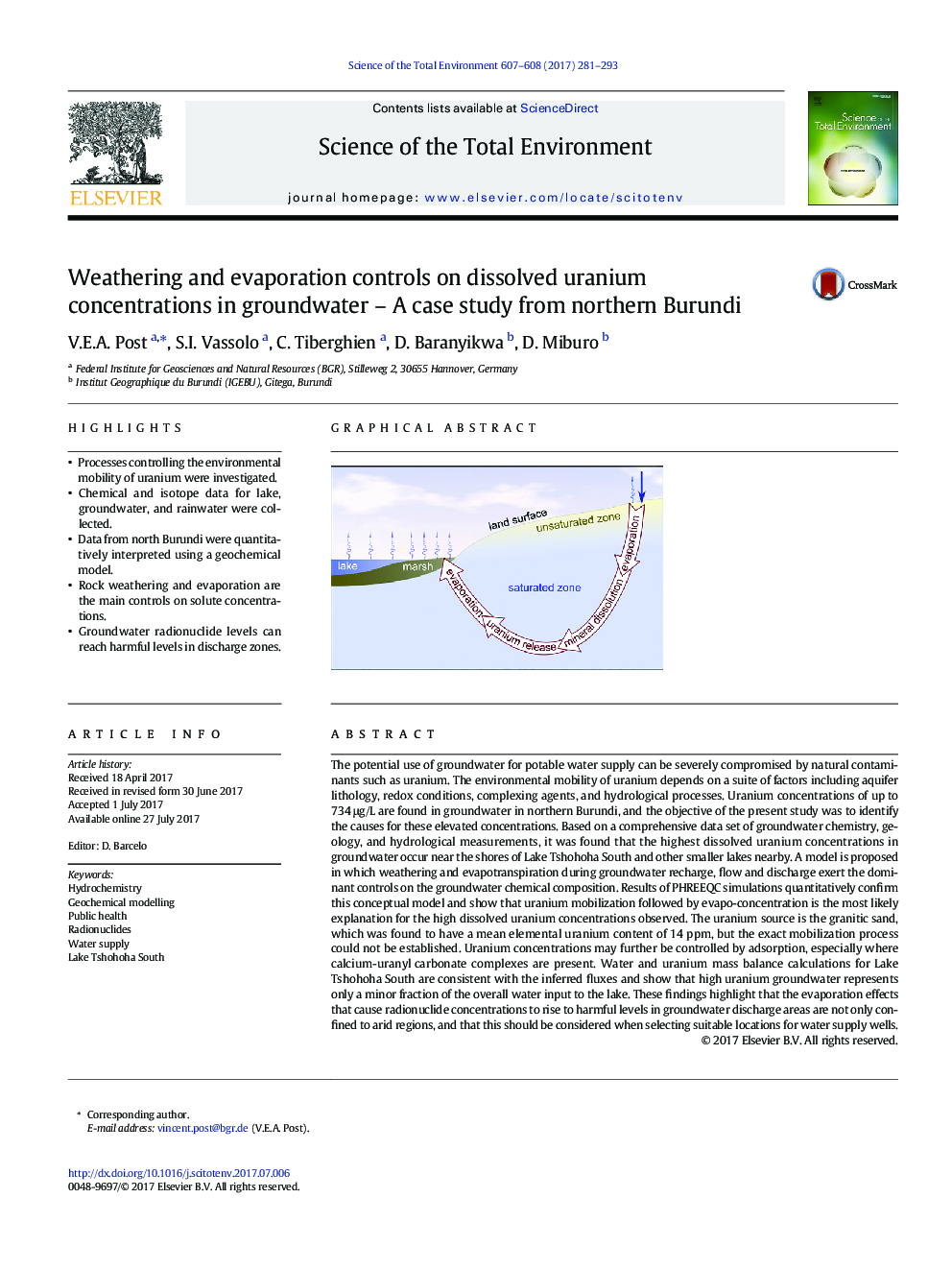| کد مقاله | کد نشریه | سال انتشار | مقاله انگلیسی | نسخه تمام متن |
|---|---|---|---|---|
| 5749987 | 1619694 | 2017 | 13 صفحه PDF | دانلود رایگان |
- Processes controlling the environmental mobility of uranium were investigated.
- Chemical and isotope data for lake, groundwater, and rainwater were collected.
- Data from north Burundi were quantitatively interpreted using a geochemical model.
- Rock weathering and evaporation are the main controls on solute concentrations.
- Groundwater radionuclide levels can reach harmful levels in discharge zones.
The potential use of groundwater for potable water supply can be severely compromised by natural contaminants such as uranium. The environmental mobility of uranium depends on a suite of factors including aquifer lithology, redox conditions, complexing agents, and hydrological processes. Uranium concentrations of up to 734 μg/L are found in groundwater in northern Burundi, and the objective of the present study was to identify the causes for these elevated concentrations. Based on a comprehensive data set of groundwater chemistry, geology, and hydrological measurements, it was found that the highest dissolved uranium concentrations in groundwater occur near the shores of Lake Tshohoha South and other smaller lakes nearby. A model is proposed in which weathering and evapotranspiration during groundwater recharge, flow and discharge exert the dominant controls on the groundwater chemical composition. Results of PHREEQC simulations quantitatively confirm this conceptual model and show that uranium mobilization followed by evapo-concentration is the most likely explanation for the high dissolved uranium concentrations observed. The uranium source is the granitic sand, which was found to have a mean elemental uranium content of 14 ppm, but the exact mobilization process could not be established. Uranium concentrations may further be controlled by adsorption, especially where calcium-uranylâcarbonate complexes are present. Water and uranium mass balance calculations for Lake Tshohoha South are consistent with the inferred fluxes and show that highâuranium groundwater represents only a minor fraction of the overall water input to the lake. These findings highlight that the evaporation effects that cause radionuclide concentrations to rise to harmful levels in groundwater discharge areas are not only confined to arid regions, and that this should be considered when selecting suitable locations for water supply wells.
88
Journal: Science of The Total Environment - Volumes 607â608, 31 December 2017, Pages 281-293
